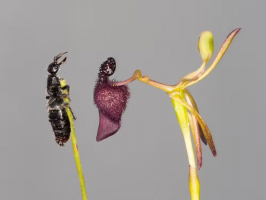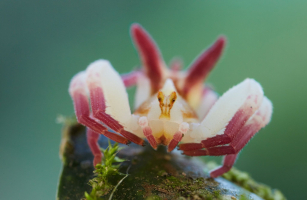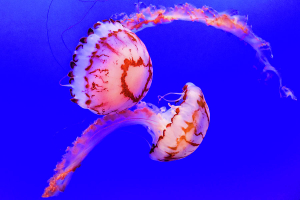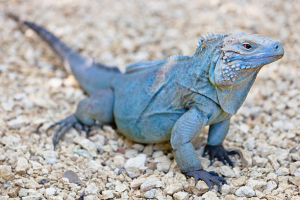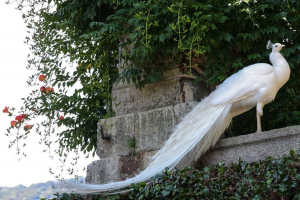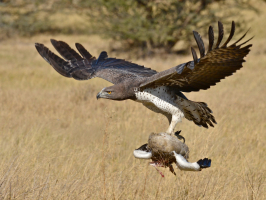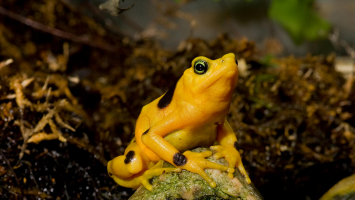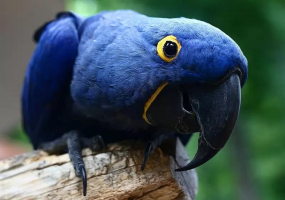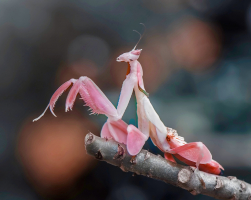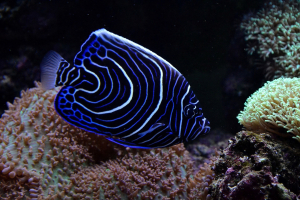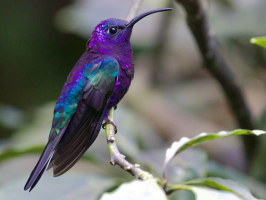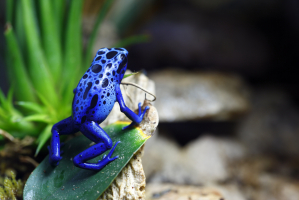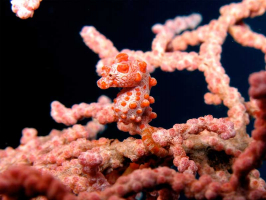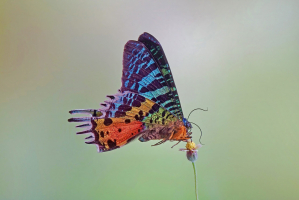Top 10 World's Most Beautiful Snakes
It should come as no surprise that snakes come in amazingly gorgeous colors and patterns considering that there are over 3,700 kinds of them in various ... read more...habitats around the world. Others have vivid colors and patterns as a warning to potential predators, while some snakes develop vibrant colors to blend in with the rainforest or forest floor. Breeders use genetics in captivity to produce rare and distinctive color variants that appeal to private collectors. Here is a list of the most beautiful snakes in the world, let's find out!
-
The Sunbeam Snakes (Xenopeltis unicolor) is the sole genus of the monotypic family Xenopeltidae, the species of which are found in Southeast Asia. The scales of sunbeam snakes are renowned for their intense iridescence. There are now two recognized species. According to DNA research, the real pythons of the Pythonidae family and the Mexican burrowing python, Loxocemus bicolor, are the xenopeltids' closest relatives.
The extremely iridescent scales that cover the whole body of sunbeam snakes are chiefly responsible for their stunning appearance. Their basic body color, which is a duller gray, black, or brown, changes drastically in the presence of sunshine. Nevertheless, due to their high fossorial and propensity for burrowing underground, they can be difficult to locate and are often solitary. Adults can grow up to 1.3 m (51 in) in length.
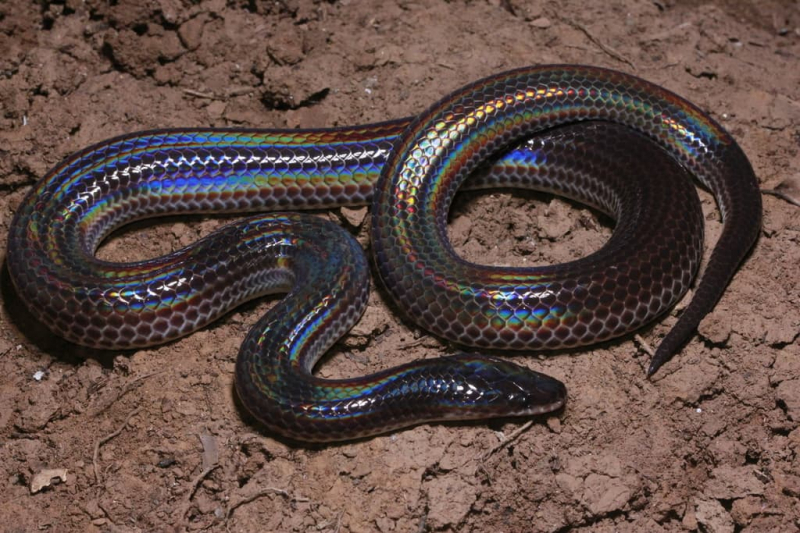
Via: iNaturalist UK 
Via: Outback Reptiles -
The Rainbow Snake, also known as the eel moccasin, is another species with a name that suits it perfectly. These largely aquatic snakes have really captivating colours, especially on their sides and bellies, were vibrant red, yellow, black, brown, and orange scale hues alternate. Originally there were two subspecies, but as of 2011, one of them has regrettably gone extinct.
The rainbow snake is a very solitary snake, in the marshes and swamps of its natural habitats in the southeastern United States, it typically hides in the water among the dense plant growth. They are notable for being remarkably non-aggressive toward people and prefer to save their energy for semi-aquatic prey like frogs and salamanders. Adult female rainbow snakes usually lay their eggs in July, leaving them underground in sandy soil. A clutch consists of around 20 eggs on average, but large females may lay over 50. The young are hatched in late summer or fall.
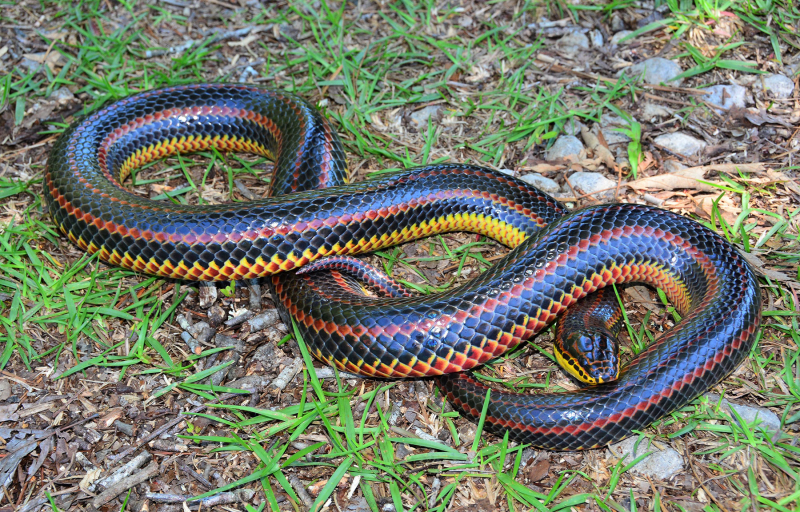
Via: Florida Museum 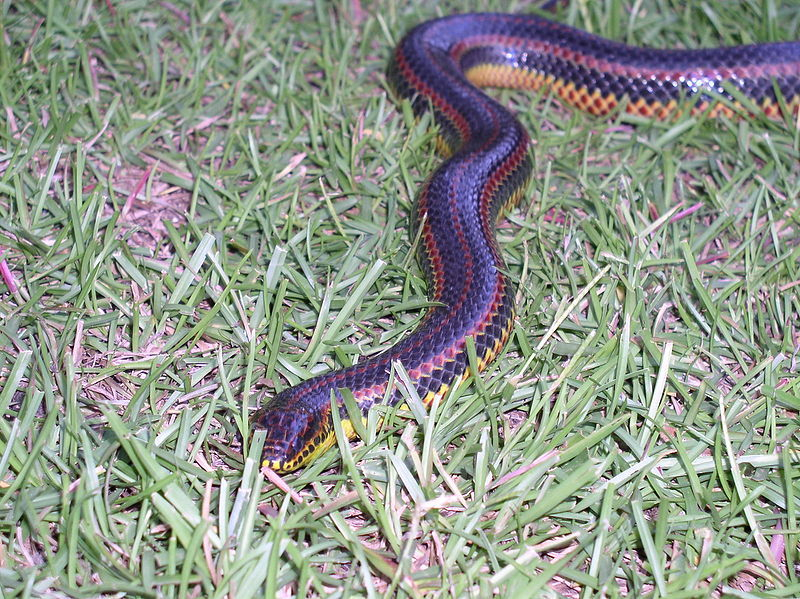
Via: iStock -
The Eyelash Viper is a species of venomous pit viper in the family Viperidae. Most of these strange but attractive snakes are found in Central and South America. Their ideal habitat is primarily found in low-elevation, shady, densely forested places close to bodies of water. It's interesting to note that experts now think the viper's "eyelashes" assist it better concealing itself by making its silhouette more challenging to see while it hides among dense plant growth.
These ambush predators are exceptionally skilled hunters, despite being somewhat smaller than the majority of other pit vipers. Thankfully, they aren't particularly hostile toward humans despite their deadly nature and razor-sharp teeth. These animals mostly eat frogs, rodents, lizards, and occasionally birds, although they also eat other small animals.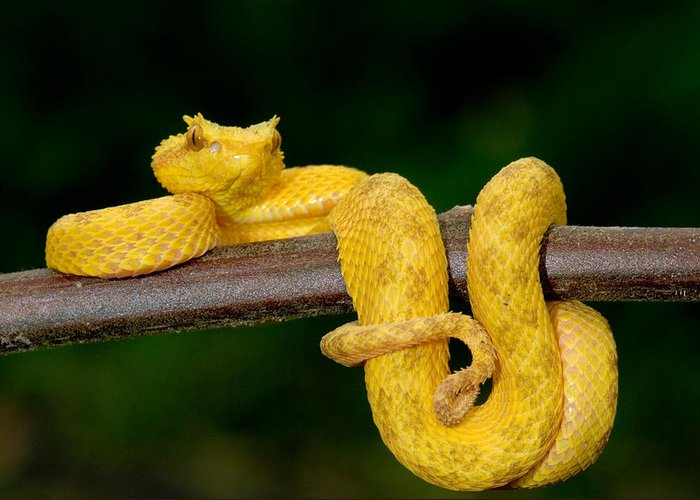
Via: Animal Spot 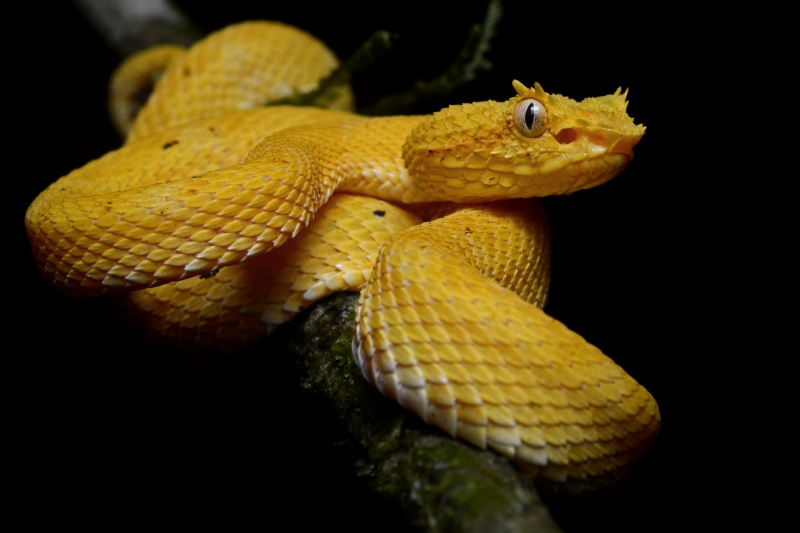
Via: Wikipedia -
The Paradise Flying Snake or paradise tree snake (Chrysopelea paradisi) is a species of snake found in southeastern Asia. Like all other members of the genus Chrysopelea. It can glide from a tree's top over a horizontal distance of at least 10 meters and is most commonly found in damp woodlands. The snake's body is captured in slow motion undulating while its head is relatively still, indicating controlled flight. They can constrict their food, which is mainly bats and lizards, and have mildly poisonous rear fangs.
The paradise flying snake, which flattens its body to make itself lighter and more aerodynamic, is a truly amazing sight, not just because of this, but also because of its stunning, vibrant color. The Chrysopelea genus of flying snakes contains a number of distinct species, but the paradise tree species is by far the most attractive. Its scale patterning differs from individual to individual. However, this snake usually appears speckled, with bands of alternating green, orange, yellow, and red colors. Along with the tiny spots, the snake's head generally includes horizontal striping.
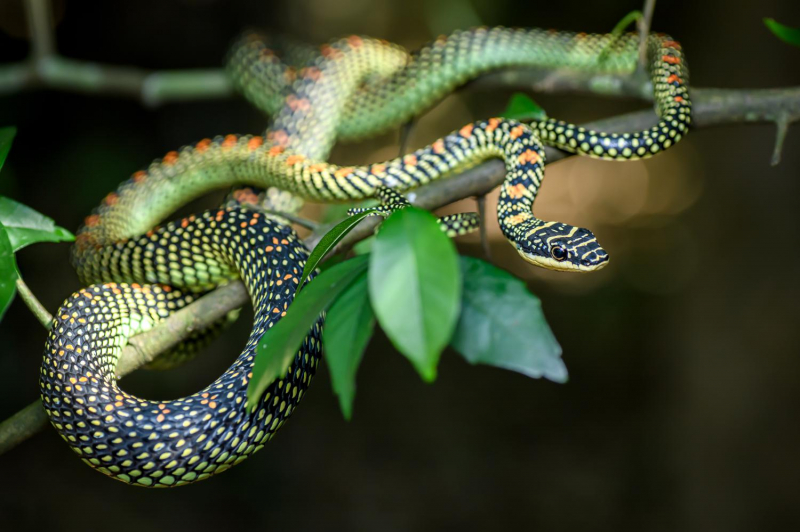
Via: Thai National Parks 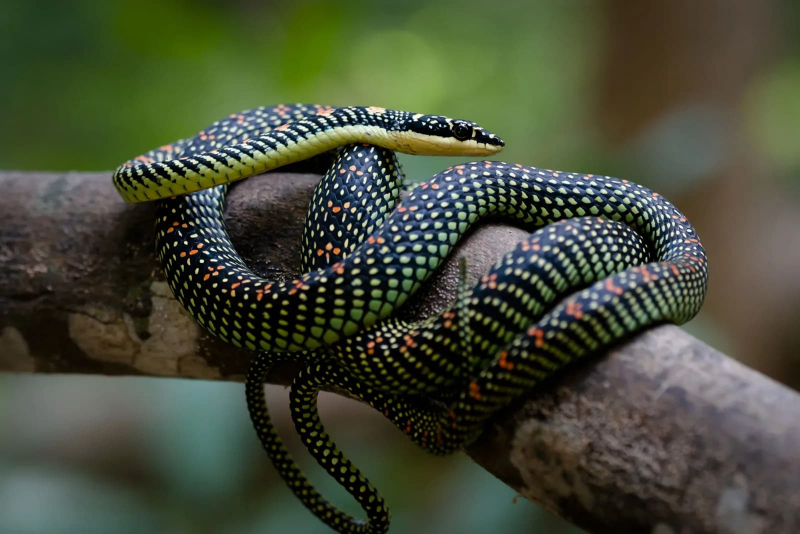
Via: Encyclopedia Britannica -
The Blue Malayan Coral Snake, also known as the blue coral snake, is a species of snake in the Elapidae family. This terrestrial snake occurs in Brunei, Indonesia, Malaysia, Singapore, Thailand, and Burma. It lives at 100 to 1,100 metres (300 to 3,600 ft) in elevation. It has a slim body and is a medium-sized coral snake. The adult can grow as long as 1.8 meters (5 feet 11 inches).
Their vibrant, blood-red heads and tails contrast beautifully with their bluish-black bodies and narrow, sky-blue stripes that run down their flanks. Due to their seclusion and semi-fossorial nature, they can be challenging to locate and accurately document. Under their densely wooded, mountainous surroundings, these snakes spend the majority of their time burrowing in the ground and leaves. Blue Malayan coral snakes aren't typically hostile, but their lengthy venom glands, which contain potent cytotoxic venom, can occasionally kill humans. Notably, they prey primarily on smaller snakes.
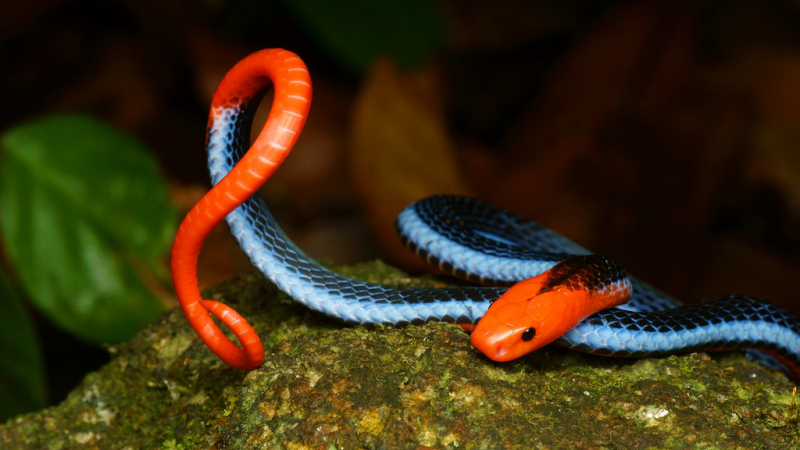
Via: Flickr 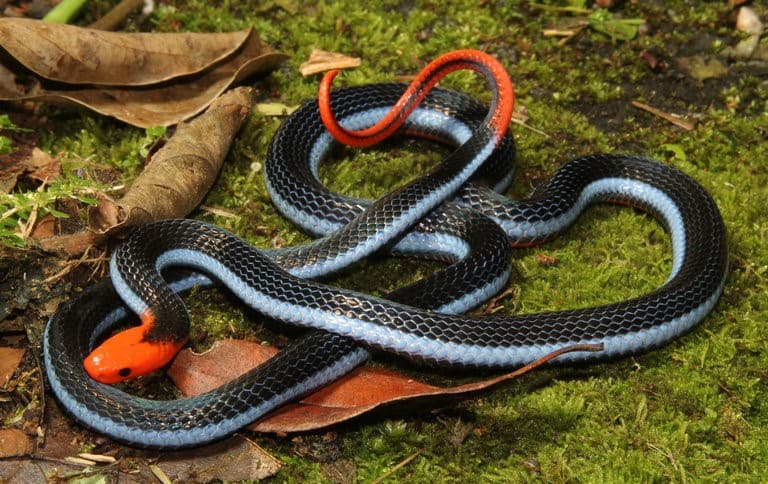
Via: Tom Chalton -
Rough-Scaled Bush Viper (Atheris hispida) is a type of poisonous viper that is unique to Central Africa. It is renowned for having dorsal scales that are very keeled and have a bristly appearance. Common names for this snake include hairy bush viper, spiny bush viper, and others. Its peculiar yet lovely outward-pointing, keeled scales, which give it a startlingly dragon-like appearance, are what make it special. These specific snakes are vividly colored, like other vipers, and have flat, broad heads, short snouts, and huge, protruding eyes.
Bright greens, yellows, oranges, browns, and greys are all present in this snake's coloring. It mainly inhabits hot, humid rainforests in Western and Central Africa in countries like Cameroon, Nigeria, Uganda, Kenya, and Ghana. There are a few subspecies, all of which share characteristics including size, color, and region of distribution. The bush viper's hemotoxic venom is highly potent, despite the fact that it doesn't attack people very often. Only a few isolated human deaths have been contributed to the species.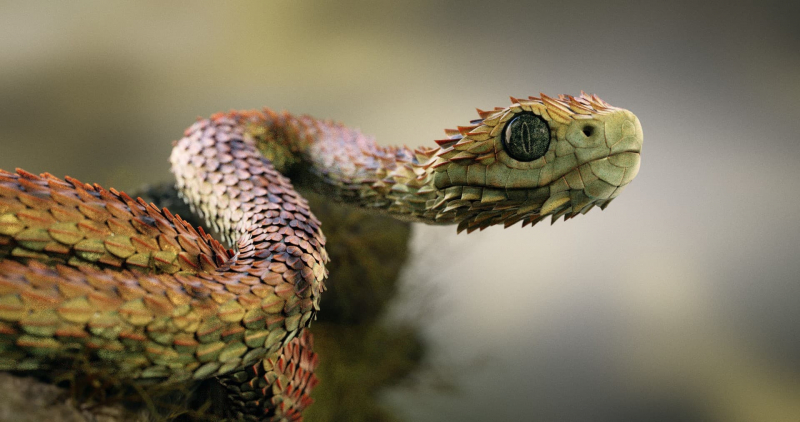
Via: Blender Artists Community 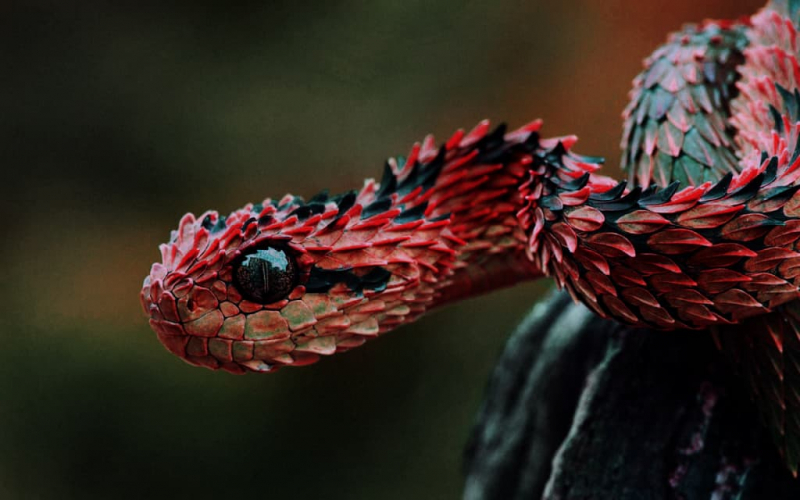
Via: iStock -
The Indian Cobra (Naja naja), also known as the spectacled cobra, Asian cobra, or binocellate cobra, is one of the "big four" species that inflict the most snakebites on humans in India. It is a species of the genus Naja that is found in India, Pakistan, Bangladesh, Sri Lanka, Nepal, and Bhutan. It differs from the king cobra, which is a monotypic member of the genus Ophiophagus. In Indian mythology and culture, the Indian cobra is adored, and snake charmers are frequently seen with them. The Indian Wildlife Protection Act presently provides for its protection in India.
Despite having fairly dull tones of grey and brown as its color, the Indian cobra is visually striking due to its scale patterning, big hood, and large size. The snake's venom is potent and lethal since it is both cardiotoxic and neurotoxic. Notably, one of the infamous "big four" snakes that kill the most people by biting them in India is the Indian cobra.
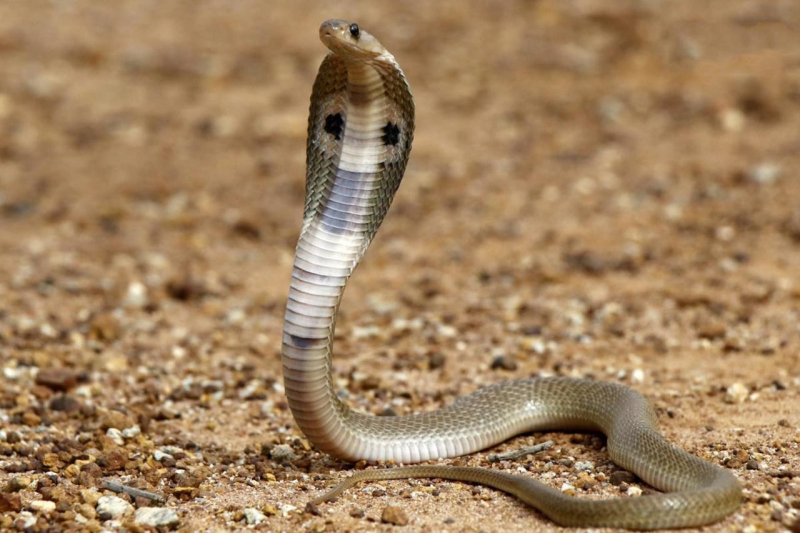
Via: Tech Explorist 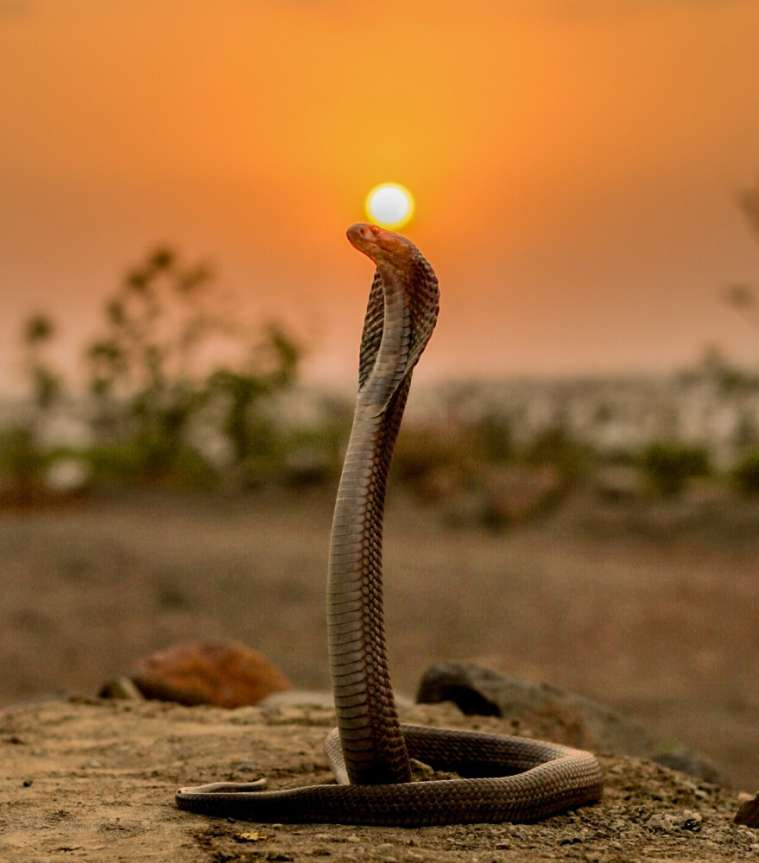
Via: Puzzle Factory -
A subspecies of the common garter snake is called the California Red-Sided Garter Snake (Thamnophis sirtalis infernalis). One of three identified subspecies of Thamnophis sirtalis, a natricine snake native to North America, can be found in California. This animal is typically associated with permanent or near-permanent bodies of water such as marshland, shallow water, and dunes. The sag ponds in the San Andreas Fault rift zone and freshwater coastal marshes are their primary habitat.
Smaller and lighter than the San Francisco garter snake, the California red-sided garter snake is a slim snake. Males normally grow to a height of 65-75 centimeters (25-29.5) while girls typically reach 90-100 centimeters (35-39 inches). Males are also noticeably leaner than females. The body of Thamnophis sirtalis infernalis is generally red with three basic stripes, some of which are yellow or blue, and a row of black dots or blotches that emerge in a striped pattern. Depending on the specimen, the red can be more or less obvious, but it still shows up as blotches and spots all over the body and on the top of the skull. Sometimes the red may be less obvious, giving the snake a black appearance with red markings.
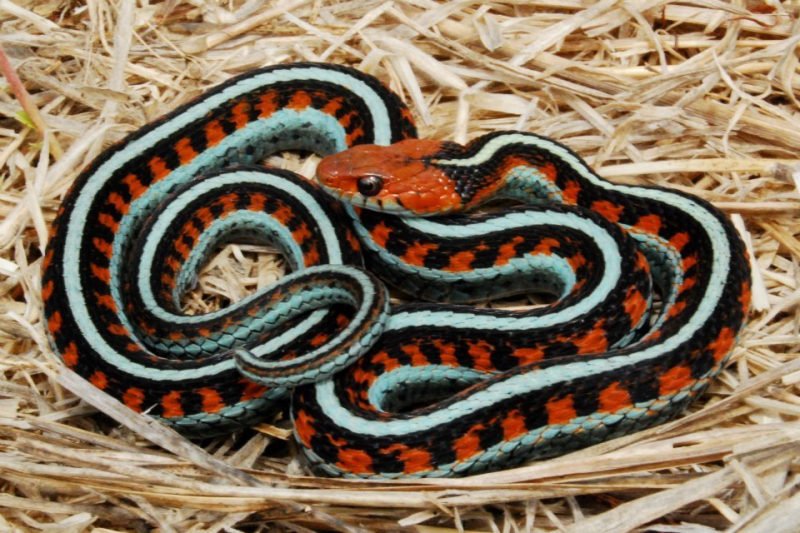
Via: ExoPetGuides 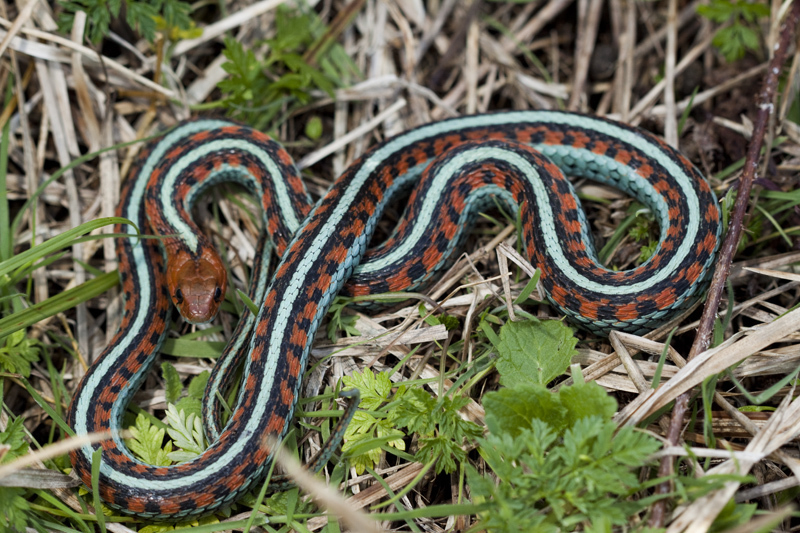
Via: iNaturalist -
The Rhinoceros Viper, or river jack, is a vividly colored, venomous snake of the family Viperidae that lives in West and Central African wetlands and rainforests. Its scientific name is Bitis nasicornis. It can be found on plantations and favors moist or damp settings. Massive, heavily keeled scales cover the body. It has a triangular head in green or blue with two or three pairs of horn-like scales on the tip of the snout and a huge black arrowhead mark on top. Although specimens up to 1.3 meters (4.3 feet) long have been documented, the usual length is 70 to 90 cm (28 to 35 inches).
Triangles, rectangles, and diamond-shaped regions in the colors red, yellow, blue, green, and black make up the body's stunning velvet-like pattern. The pattern is reminiscent of that of the Gaboon viper; however, the pattern of the rhinoceros viper is more colourful. The rhinoceros viper is primarily terrestrial and active at night, though it occasionally inhabits water and trees. Although it is a sluggish and slow-moving snake, it can strike sideways and forward quickly. It uses its cryptic coloring to blend in with the forest floor's foliage as it stalks prey by hiding in ambush along rodent paths.
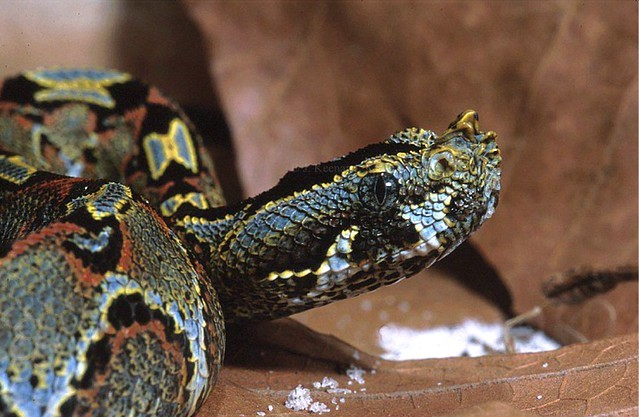
Via: ResearchGate 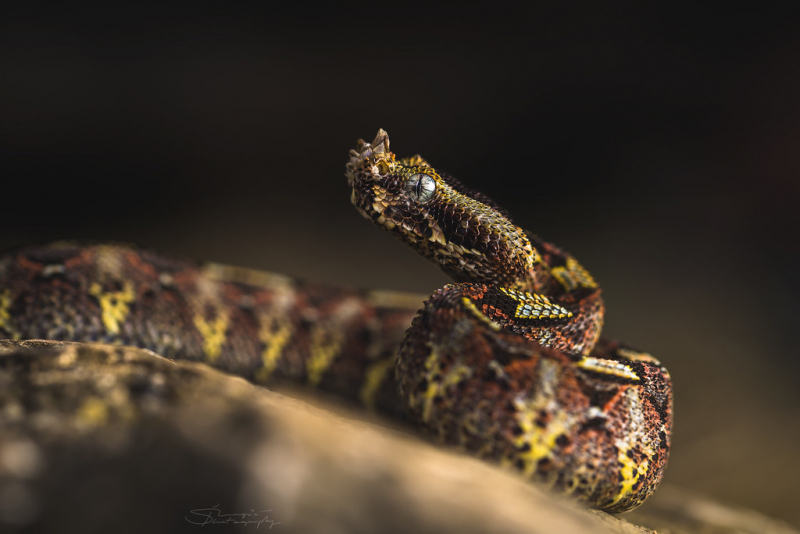
Via: Flickr -
The Emerald Tree Boa (corallus caninus) is a non-venomous boa species found in the rainforests of South America. Corallus batesii has been separated from C. caninus as a species since 2009. Henry Walter Bates, an English naturalist, and adventurer are remembered by the specific or subspecific term, batesii, for whom Batesian mimicry is also named. The length of an adult is roughly 6 feet (1.8 meters). They have front teeth that are proportionately larger than those of any other non-venomous snake and are highly developed.
The common color pattern is an emerald green background color with so-called "lightning bolts" or an uneven white zigzag stripe along the back and a yellow belly. The vivid coloring and markings make South American snakes easily identifiable. Before ontogenetic coloring takes place and the animals change to emerald green (after 9–12 months of age), juveniles range in hue from different tones of light and dark orange to brick-red. The green tree python (Morelia Viridis), a type of snake whose hatchlings and young can also be canary yellow or brick-red, exhibits the same behavior. Contrary to common perception, emerald tree boas do not have juveniles that are yellow like green tree pythons do. Eventually, as they age, their true emerald color sets in, usually by the time they are around a year old. The snake’s eyes are a similar greenish-yellow shade with typical thin, slit-shaped pupils.
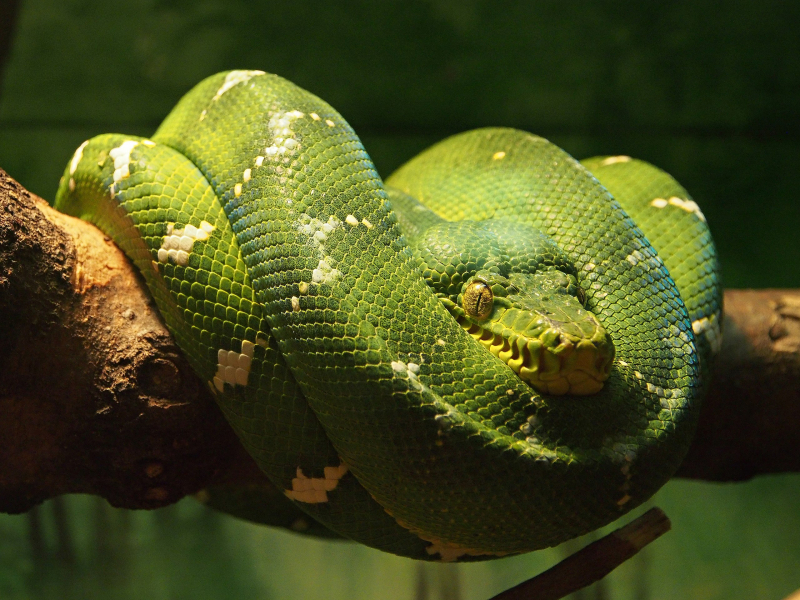
Via: Wikimedia Commons 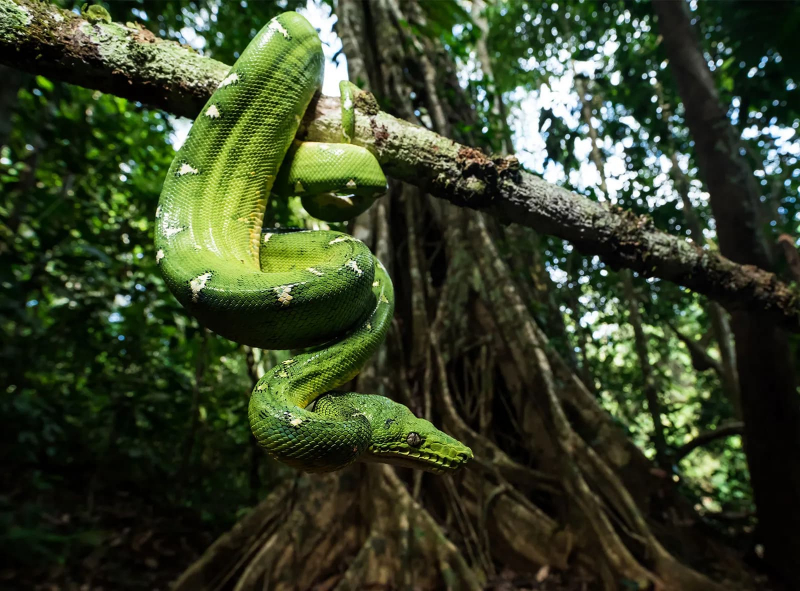
Via: Encyclopedia Britannica












